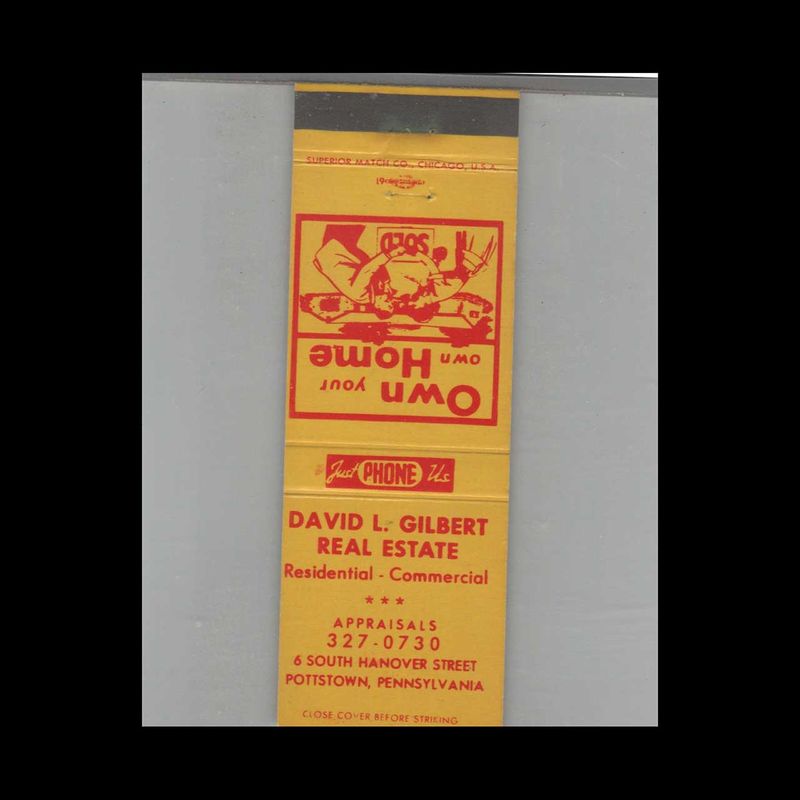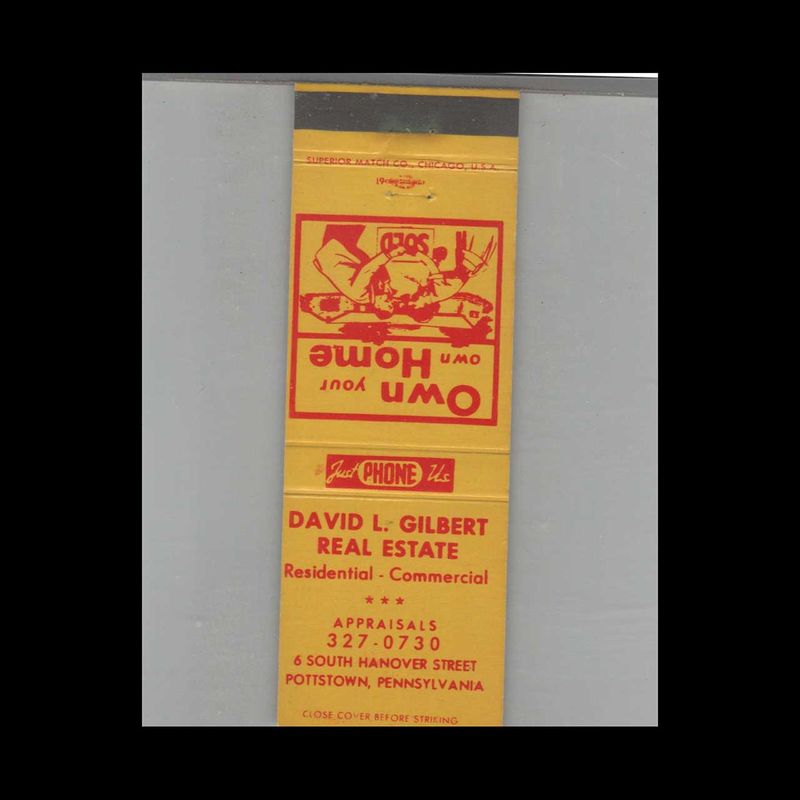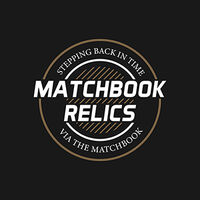Financial Related
The Financial Industry’s Ingenious Use of Vintage Matchbooks for Promotion
In the mid-20th century, the financial industry, including banks, credit unions, savings and loan associations, real estate firms, insurance companies, and others, discovered an innovative and practical way to promote their offerings: vintage matchbook covers. These small, everyday items became powerful marketing tools, helping financial institutions reach a wide audience, build brand recognition, and foster customer loyalty. This article explores how various sectors of the financial industry leveraged matchbooks to advertise their services effectively.
Banks and Credit Unions: Building Trust and Accessibility
Banks and credit unions used matchbook covers to highlight their services, build trust, and emphasize accessibility. These matchbooks, often distributed in branches, local businesses, and community events, featured the institution’s name, logo, and contact information, along with slogans like "Your Trusted Financial Partner" or "Serving the Community Since [Year]." The covers often depicted images of the bank building, friendly customer service representatives, or symbols of financial security such as vaults and safes.
By distributing matchbooks widely, banks and credit unions ensured that their brand remained visible in the daily lives of potential and existing customers. The practical nature of matchbooks meant they were frequently used, reinforcing the institution’s presence and reliability. This constant exposure helped build trust and encouraged customers to consider the bank or credit union for their financial needs, from savings accounts to loans.
Savings and Loan Associations: Emphasizing Stability and Growth
Savings and loan associations utilized matchbooks to emphasize stability and the benefits of saving and investing. These matchbooks often showcased the association’s logo, contact details, and images of homes, piggy banks, or growing plants, symbolizing financial growth and stability. Slogans like "Helping You Build a Better Future" or "Your Savings Partner" were common.
By distributing matchbooks in their branches and through local businesses, savings and loan associations kept their services top-of-mind for consumers. The repeated interaction with the matchbooks served as a reminder of the importance of saving and the benefits of doing so with a reliable institution, ultimately driving customer engagement and loyalty.
Real Estate Firms: Highlighting Dreams and Opportunities
Real estate firms creatively used matchbooks to promote properties and services, emphasizing the dream of homeownership and investment opportunities. These matchbooks featured the firm’s name, logo, and contact information, along with images of attractive homes, apartments, or commercial properties. Slogans such as "Find Your Dream Home with [Firm Name]" or "Invest in Your Future" were often used.
Matchbooks were distributed at open houses, real estate offices, and local businesses, ensuring they reached potential buyers and investors. The practical utility of matchbooks meant they were kept and used, providing continuous exposure to the real estate firm’s brand and services. This helped keep the firm top-of-mind when consumers were ready to buy, sell, or invest in property.
Insurance Companies: Promoting Security and Peace of Mind
Insurance companies leveraged matchbooks to promote security and peace of mind, essential aspects of their services. These matchbooks displayed the company’s logo, contact information, and often depicted reassuring images like family portraits, homes, or cars. Slogans such as "Protecting What Matters Most" or "Your Safety Net" were common.
Distributed through insurance offices, community events, and local businesses, these matchbooks ensured that the insurance company’s name and services were constantly visible. The frequent handling of matchbooks reinforced the message of security and reliability, encouraging consumers to consider the company for their insurance needs, from health and life insurance to home and auto coverage.
Other Financial Services: Diversified Offerings and Expertise
Other financial services, including investment firms, tax advisors, and financial planners, also used matchbooks to highlight their expertise and diversified offerings. These matchbooks often featured the firm’s logo, contact details, and images symbolizing financial success, such as graphs, charts, or satisfied clients. Slogans like "Your Financial Future Starts Here" or "Expert Guidance for Your Investments" emphasized the value of their services.
By distributing matchbooks at their offices, seminars, and community events, these firms ensured that their brand and services were always within reach of potential clients. The practical and frequent use of matchbooks helped build brand recognition and trust, positioning the firms as reliable partners in managing and growing personal and business finances.
Conclusion
The use of vintage matchbooks by the financial industry was a strategic and effective marketing approach. By turning these everyday items into powerful advertising tools, financial institutions of all kinds ensured their brand remained visible and accessible. The strategic distribution, combined with the practical utility and nostalgic charm of matchbooks, made them an ideal medium for promoting financial services. Today, these vintage matchbooks serve as charming relics of a bygone era, illustrating the innovative ways in which the financial industry connected with its customers and promoted its offerings.


